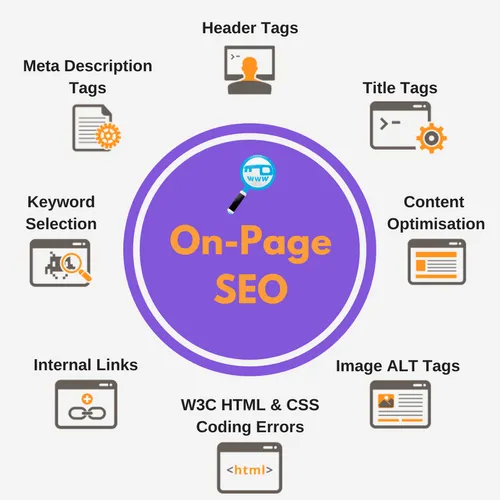Minimalism in Web Design: Navigating the Evolution of Simplicity
In the ever-evolving landscape of web design, one concept has stood the test of time and continues to shape the digital experience for users worldwide – Minimalism in Web Design. This design philosophy revolves around the idea that less is more, emphasizing simplicity, clarity, and functionality. Let’s embark on a journey through the evolution of Minimalism in Web Design, exploring its origins, principles, and its enduring impact.

Origins of Minimalism in Web Design
The roots of Minimalism in Web Design can be traced back to the mid-20th century when the broader Minimalist movement emerged in various art forms. Artists and designers sought to strip away unnecessary elements, focusing on the essence of their work. This ethos eventually found its way into the digital realm as websites began to populate the burgeoning internet.
Early websites were often cluttered with flashy graphics, numerous fonts, and excessive content, reflecting a lack of design maturity. As the internet evolved, designers recognized the need for a more user-friendly and visually appealing approach. This recognition marked the beginning of the Minimalist revolution in web design.
Key Principles of Minimalism in Web Design
Simplicity is Key
Minimalist websites prioritize simplicity, presenting only the essential elements to convey the message effectively. This approach reduces cognitive load, making it easier for users to navigate and understand the content.
Whitespace Matters
Also known as negative space, whitespace plays a crucial role in Minimalist design. It helps in creating a clean and uncluttered layout, allowing users to focus on the core elements of the website.
Limited Color Palette
Minimalist websites often stick to a limited color palette, choosing a few subtle and harmonious colors. This not only enhances the overall aesthetic but also contributes to a more cohesive brand identity.
Typography Precision
Minimalism places a strong emphasis on typography. Clean and readable fonts are favored, and designers use typography as a design element itself, incorporating it strategically to enhance the visual appeal.
Functional Imagery
When images are used, they are carefully selected to serve a purpose. Functional imagery in Minimalist design contributes to the overall narrative and complements the content without overwhelming the user.
Read More Unlocking Success: The Impact of Core Web Vitals on SEO Rankings
Evolution of Minimalism in Web Design
The evolution of Minimalism in Web Design can be observed in its adaptation to changing technological landscapes. With the rise of mobile devices and responsive design, Minimalism became even more critical. The need for a seamless user experience across various screen sizes propelled the minimalist approach to the forefront.
As technology advanced, animations and micro-interactions were introduced to Minimalist designs, adding subtle elements of delight without compromising the clean and simple aesthetic. This evolution allowed designers to strike a balance between functionality and visual appeal.
Impact on User Experience and Branding
Minimalism in Web Design has a profound impact on user experience (UX). By eliminating unnecessary elements and distractions, users can navigate a website more intuitively. Fast-loading pages, clear calls-to-action, and an uncluttered interface contribute to a positive and efficient user journey.
Moreover, Minimalism has become synonymous with modern and sophisticated branding. Many successful companies, from tech giants to startups, have embraced Minimalist design principles to convey a sense of professionalism, trustworthiness, and a focus on the essentials.
Embracing Minimalism Today
In today’s digital landscape, the influence of Minimalism in Web Design continues to grow. Designers and businesses understand the importance of a clean and user-centric approach. The use of white space, minimal color schemes, and thoughtfully chosen typography are now standard practices in web design.
As we navigate an era dominated by information overload, Minimalism provides a breath of fresh air. It not only meets the demands of modern users but also reflects an understanding that simplicity is the key to creating memorable and effective digital experiences.
In conclusion, the evolution of Minimalism in Web Design showcases its adaptability and enduring relevance. From its humble beginnings as a reaction to cluttered web interfaces to its current status as a design philosophy that underpins the digital experience, Minimalism continues to shape the way we interact with the online world. As we move forward, it’s clear that embracing simplicity in web design will remain a powerful tool for creating impactful and user-friendly digital spaces.






